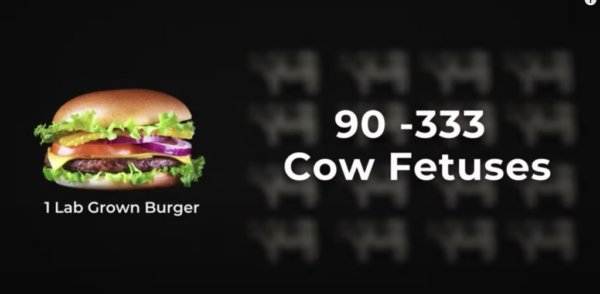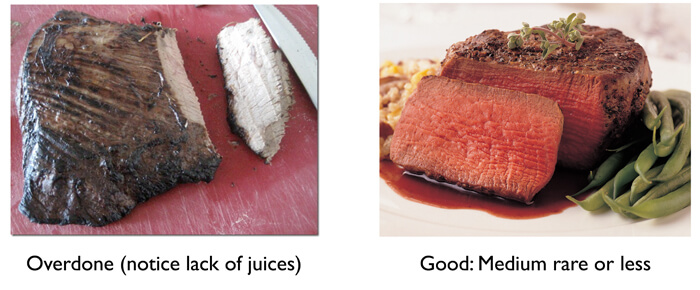Breeding low fat animals has altered muscle metabolism, and contributed to flavorless meat for reasons that go way beyond the lack of fat.

What is Synthetic Meat and How is it Made?
Table of Contents
Several years ago, a journalist told me that the anti-meat movement was more powerful than most people realized. At first, I couldn’t imagine Americans would accept life without genuine burgers, hot dogs, or fried chicken, so I wasn’t concerned. But I did start paying attention. Years later, I’m still not worried that a genuine steak is going to go the way of the passenger pigeon, but it does seem like there is unwarranted enthusiasm for plant-based proteins and other high-tech foods. I’ve already written on the invasion of plant-based milk substituting for the real article. This article will focus on the subset of synthetic protein products called lab-grown meat, also known as cultured meat.
Synthetic meat refers to two very different categories of meat substitutes.
- Vegan or plant-based fake meats that are made from processed plant proteins assembled in a factory
- Lab-grown meat or cultured meat made in Petri dishes using intensive cull culture methodologies
The lab-grown version of synthetic meat has been in development since the early 2000s. The first burger was made in 2013, at a cost of over $300,000. Once systems are optimized, costs may get down to $17 to produce, $40 in the grocery store, and $100 for a burger at a sit-down restaurant.
Still, it’s early days. But I’d like to discuss why I think the scenario is unlikely to change significantly.
Synthetic meat proponents claim it offers several important benefits over real meat. It’s more humane since no animals are directly killed. It’s healthier since you can dial up or down whatever nutrients you want. And it’s better for the climate since it takes up less space and produces fewer CO2 emissions. These claims have already been used to drum up billions of dollars from enthusiastic venture capital investors, folks who can usually afford to lose if the gamble fails to pay off. They’ve also been used to support financial investment from the government using our tax dollars.
This article is continued below...(scroll down)
Let’s take a look at these claims, starting with the claim no animals are killed.
Is Synthetic Meat Humane?
To answer this question, we really need to understand how synthetic meat is made. Let’s take a look at where it comes from, how it’s fed, and what else goes into the process.
Lab-Grown Meat Comes from Muscle Cells
Lab-grown meat starts out as a chunk of actual meat that was removed from an animal without slaughtering it. Scientists then need to break this piece of meat down into its individual cells to pick out certain ones. You see, regular muscle cells will not divide, but special cells within the muscle, called muscle stem cells, can. These cells can divide about 20 times, which gets you about a million cells.
How big is a million muscle cell steak? Let’s say each cell is 1 cm by 1/10,000 cm x 1/10,0000 cm since muscle cells are long and skinny. A million of those amounts to about a cubic centimeter (if I’ve done my math right). I’m not sure how they can make a meal from that but okay so we have a very tiny steak, about the size of a cranberry. Apparently to make a meal you would have to repeat this process many times over. That explains the $330,000 price tag of the first cultured meat burger.
Synthetic Meat Feeds on Baby Cow Fetus Blood
The baby muscle tissue needs to be fed for it to reproduce those 20 times over. And so far, there’s no way to grow baby burger cells without using serum from the blood of cow fetuses. Since it comes from cow fetuses, the serum is called fetal bovine serum. It contains 1800 different proteins and more than 4000 other compounds, so scientists are unlikely to replace that any time soon.
Here’s where the process gets ridiculous.
To make a single burger you need to feed baby meat cells 50 liters of bovine serum. To make that much serum, you need to take all the blood from between 90 and 333 cow fetuses. Fetal bovine serum is harvested from bovine fetuses taken from pregnant cows during slaughter.

In other words, just a single burger needs to be fed with the blood of at least 90 slaughtered pregnant cows and their fetuses. How twisted do you have to be to say that no animals are killed, given that one burger requires so much death?
Granted, the scientists were probably not the ones who said that.
What’s more, it may be possible to pare down the ingredients required to something less than the 5,800 compounds currently involved. But even so, the need for sterility makes it unlikely the cost will be reduced to the point of affordability. The process requires sterility at every step, including the production of each individual fetal blood substitute component. Besides, the farther we move away from biologically normal muscle feed, the farther we move away from biologically normal muscle.
Lab-Grown Chickens Don’t Need Beef-Fetuses
Chicken may be a more practical flavor of lab-grown meat than cows, at this point in time. For one thing, chickens seem to possess stem cells that can divide quite a bit more than cow stem cells. What’s more, the process of growing chicken-based lab meat may not involve killing anything.
As of 2021, at least one company claimed to have a culture medium that is fully animal-free. It’s actually impossible to know, however. Their product is now proprietary. Whatever it contains, it’s been able to reduce the cost of synthesizing meat by 88 times.
Lab Meat Grows on an Artificial Scaffold
Muscle cells will not grow unless they are attached to a surface. So when labs culture muscle meat, they must add an artificial scaffold into the medium for growing meat cells. These look like microscopic little wicker baskets and are made of collagen or fiber.
Right now, more than half of the volume of synthetic meat is composed of these little baskets. This means each bite will be mostly not meat, but scaffolding—the synthetic structures upon which the meat grew. Since this will affect the nutritional profile, I’ll discuss this in more detail below.
Even if the proprietary liquid used to grow the baby muscle cells into larger blobs is truly free of animal products, there’s still the matter of that scaffolding. This material is generally made of collagen or fibrin proteins. These proteins come from animal products. So with current technology, it’s impossible to make synthetic meat that is completely death-free.
Someday, we may leap that hurdle too.
What exactly do we mean by humane?
It’s often just assumed that it means no killing whatsoever. But that’s a silly thing to argue when it comes to animals we’ve domesticated and bred for the express purpose of eventually eating them. I think a better yardstick is giving the animals a good life.
After all, if the animals had a good life, roaming on pasture in a herd or a flock, and were killed in a humane manner, what’s wrong with that? It certainly seems like something we should be talking about as an alternative to our current, confinement feeding methods before we go to the extreme of investing in lab-grown meat.
Personally, I’d rather see folks investing in ways to raise animals in a humane manner. Part of that is feeding them a species-appropriate diet, and giving them access to sunshine and the outdoors. Raising animals right fills their meat with more nutrients than what’s currently for sale in most grocery stores.
And let’s not forget about the end user, us. I would argue that our well-being needs to be considered, also. Particularly the nutritional aspects that directly affect our health. Let’s take a look at that question next.
Is Synthetic Meat Nutritious?
Synthetic meat companies claim their scientists can dial up nutrients at will. But how is that possible? Muscle cells do not produce their own vitamins or minerals. They can’t contain nutrients that haven’t been added to the feed, and even if they are added, they still may not concentrate the nutrients in meaningful amounts.
We already know that lab-grown meat lacks the most bioavailable form of iron, called heme iron. The industry has put a spin on this, to downplay that problem. They say that heme iron has been linked to type 2 diabetes, but there is minimal evidence to support this claim. Additionally, as of 2020, it was still unknown if lab-grown meat can be a significant source of B vitamins, particularly B 12.
Furthermore, lab-grown “meat” lacks fat cells and connective tissues. It is really just muscle cells. Growing these additional components will require solving a whole new set of technical laboratory challenges. This means lab-grown meat will be fat-free for the foreseeable future. Or it may contain added fats that, no doubt, will come from seed oils. Seed oils are the least healthy form of fat available.
There are many challenges to making lab-grown meat as nutritious as it needs to be. Given the current tendency to exaggerate benefits and downplay potential risks, I’m not optimistic that making a nourishing product is in the cards. It’s not clear to me that it’s even a goal. It’s just words used for drumming up more investors.
Lab Meat Is Full of “Scaffolding”
Cultured muscle cells require a scaffolding matrix upon which to grow. Right now, that matrix is “hydrogel” made of collagen or fibrin that has been molecularly reconfigured for laboratory growth purpose. In fact, there’s so much of it that there’s more than the meat. According to this article, “The hydrogel volume typically largely exceeds that of the cells…therefore macronutrient composition of the overall product will also be affected by the scaffold material.”
However, it’s unclear if this engineered material is actually suitable for human consumption. The FDA recently approved a meat product made by Berkeley food tech company, Upside Foods, as “safe” for human consumption. But, there’s no information on what exactly was subjected to testing, or what kinds of safety tests were performed. None may have been required, as is often the case with compounds that are similar to others in the food supply.
Is Synthetic Meat Sustainable?
One of the biggest claims synthetic meat companies make is that their products are more sustainable than growing cattle. They claim to use less land and water and produce fewer greenhouse gasses. That last claim is very hard to assess, but recently researchers at the University of California, Davis took a turn at it. In a preliminary analysis of CO2 and its equivalents (like methane), they found reason to believe that lab meats will generate “several orders of magnitude” more CO2 than the genuine article.
One order of magnitude is ten times more. Two is 100 times more. “Several” usually means three or more, so we could be looking at an industry that generates 1000 times more CO2.
The authors call for a more detailed analysis based on specific processes. They warn that in “the absence of rigorous analysis” it’s unwise to take the industry claims of “transformational environmental benefits” at face value.
The Infectious Problem
Aside from the lack of nutrition and lack of climate benefits, the industry has huge exposure to infections. Their products have zero immune systems and they are clones of each other, leaving every vial open to all manner of bacterial and viral contamination. It’s not a matter of if there will be infections, it’s a matter of when, and how bad.
This means sterility is of paramount importance. But sterilization requires lots of plastic—gloves, masks, gowns, eye shields, etc. And lots of chemicals. These sorts of inputs have yet to be factored into the environmental impact.
Funding Synthetic Meat Research: Opportunity Costs
As of 2021, investors have poured some $2 billion into cultured meat. The government has invested tens of millions more.
One group in Italy has called for radical changes to the farm subsidies and has created a petition to get the laws changed. If the petition becomes law, then funds that the EU now devotes to things like regenerative animal agriculture are going to be diverted instead to more cellular meat and plant-based agriculture. They seem to be focused on animal rights since their stated goal is to “ End The Slaughter Age. “
I always wonder what to think about these animal rights groups claiming to be interested in animal rights. What about wildlife? I mean if they care about domestic animals, why don’t they care about all the animals that get displaced by the billions of acres of monoculture plants we grow? The most sustainable forms of agriculture support the local ecosystem, and they do so by including animals. It seems like a weird narrow obsession to focus in on domestic animal welfare in a food production system that many people want to abandon anyway.
There are many ways to raise animals that are humane and that allow for at least some wildlife to coexist. It makes more sense to me to support that, rather than fight against it.
Escape the absurdity.
Many claim Churchill suggested that, with a better understanding of hormones, “We shall escape the absurdity of growing a whole chicken in order to eat the breast or wing, by growing these parts separately under a suitable medium.”
If he really said that, it was not one of his finer moments. You don’t need technology to escape the absurdity of using only a few parts of the animal. You only need a cookbook.
Additional Info
3-d Printed Steak Is Real. Watch the video here.
The Saturated-Fat Question. Read the history of this idea here.
How to make chicken broth. Watch the video here.
Example of how money might be better spent: Regenerative Ag at the Savvanah Institute
Please note: Please do not share personal medical information in a comment on our posts. It will be deleted due to HIPAA regulations.
This Post Has 5 Comments
Note: Please do not share personal information with a medical question in our comment section. Comments containing this content will be deleted due to HIPAA regulations.


















Hello Dr. Cate, I always think based on your principle of “If it didn’t exist a few hundred years ago, don’t take it”. It has helped me not go crazy in this health industry with 1000s of conflicting advice. what’s your opinion about AVocado SOyabean unsaponifiables. I give it to my dog for apparent joint benefits, but wouldn’t SOYABEAN processed mean bad?
After reading Deep Nutrition, my husband and I are ready to take the plunge and add organ meats to our diet. Can you clarify how much/how often we need to eat in order to get the optimal benefit? Thank you!
A quarter to half pound of liver once a week is a great start!
As usual, Dr. Cate has taken a complicated and important subject and made the information related to it accessible for all. We rely on Dr. Cate to always be the expert voice of reason and she always delivers. Very grateful, Thank you so much.
I enjoyed this very much, I haven’t spent any time looking into this subject and this will definitely motivate some research
Thanks